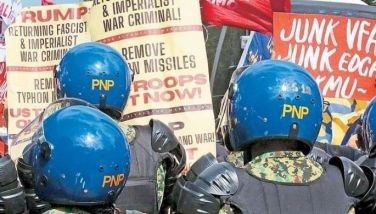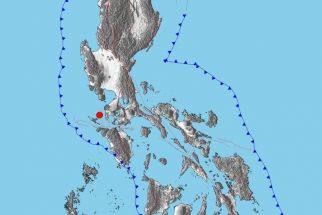AFP, PNP eye using ‘SparrowHawk’ for patrol operations
October 23, 2006 | 12:00am
It may be small like a sparrow, but it’s as keen as a hawk.
The military is eyeing the possibility of acquiring a revolutionary aircraft that is small yet can be used in various patrol, reconnaissance, surveillance and security operations.
Welcome the "SparrowHawk," a lightweight and cost-efficient gyroplane offered by a Subic-based firm to the Armed Forces of the Philippines (AFP) and the Philippine National Police (PNP).
Michael Cowan, vice president and chief of operations of Gyroplane Rotorcraft Inc., said during the presentation of the "SparrowHawk" at Camp Aguinaldo that their product, which is manufactured by American Autogyro, may be the answer to the equipment shortage in the military, as the "SparrowHawk" is cost-efficient and is relatively cheaper than the conventional helicopters or airplanes used by the AFP.
Cowan said the "SparrowHawk" costs about P4.2 million — the price of a sports utility vehicle. Maintaining the aircraft costs about $20 an hour, including fuel and overhaul costs.
The gyroplane consumes 6.5 gallons of unleaded automobile fuel, instead of expensive jet A1 fuel.
It uses a 165-horsepower Subaru EJ25 engine and has a two-blade rotor measuring 30 feet. Its frame is made of aluminum, while its cabin is made of molded fiberglass.
The "SparrowHawk" is equipped with navigation lights, a VHF communications system, an intercom and global positioning system (GPS).
The aircraft has a fuselage length of 12 feet, stands 10 feet and is six feet wide. It can carry two passengers, as well as a load of 650 pounds.
Cowan said that because the "SparrowHawk" can fly as high as 10,000 feet, it is difficult for enemies to spot and is often used for surveillance and reconnaissance missions.
"It can travel 250 nautical miles from the time it takes off and has a 30 minute reserve so, in case you run low on fuel, you will have enough time to find a place to land," he said.
Besides being cost effective, the gyroplane is easier to fly and is very safe, Cowan said. "It can take gusty winds like an ordinary helicopter. It flies like any fixed-wing airplane. It’s just like flying a Cessna or a Piper," he said, referring to two kinds of single engine, fixed-wing aircraft.
AFP Public Information Office chief Lt. Col. Bartolome Bacarro said a team was formed by the military leadership to study the possible use of the SparrowHawk in their operations.
Bacarro also said the AFP has not yet signed a deal with the Subic-based firm for the acquisition of the aircraft, though they are studying the full potential of utilizing the "SparrowHawk" for military operations, in combat or for humanitarian missions, such as rescue and relief operations.
Under the Philippine Defense Reform program of the Department of National Defense, the capability of the AFP is to be upgraded, a mandate that includes the procurement of modern equipment for its major services — the Army, Air Force and Navy.
The military is eyeing the possibility of acquiring a revolutionary aircraft that is small yet can be used in various patrol, reconnaissance, surveillance and security operations.
Welcome the "SparrowHawk," a lightweight and cost-efficient gyroplane offered by a Subic-based firm to the Armed Forces of the Philippines (AFP) and the Philippine National Police (PNP).
Michael Cowan, vice president and chief of operations of Gyroplane Rotorcraft Inc., said during the presentation of the "SparrowHawk" at Camp Aguinaldo that their product, which is manufactured by American Autogyro, may be the answer to the equipment shortage in the military, as the "SparrowHawk" is cost-efficient and is relatively cheaper than the conventional helicopters or airplanes used by the AFP.
Cowan said the "SparrowHawk" costs about P4.2 million — the price of a sports utility vehicle. Maintaining the aircraft costs about $20 an hour, including fuel and overhaul costs.
The gyroplane consumes 6.5 gallons of unleaded automobile fuel, instead of expensive jet A1 fuel.
It uses a 165-horsepower Subaru EJ25 engine and has a two-blade rotor measuring 30 feet. Its frame is made of aluminum, while its cabin is made of molded fiberglass.
The "SparrowHawk" is equipped with navigation lights, a VHF communications system, an intercom and global positioning system (GPS).
The aircraft has a fuselage length of 12 feet, stands 10 feet and is six feet wide. It can carry two passengers, as well as a load of 650 pounds.
Cowan said that because the "SparrowHawk" can fly as high as 10,000 feet, it is difficult for enemies to spot and is often used for surveillance and reconnaissance missions.
"It can travel 250 nautical miles from the time it takes off and has a 30 minute reserve so, in case you run low on fuel, you will have enough time to find a place to land," he said.
Besides being cost effective, the gyroplane is easier to fly and is very safe, Cowan said. "It can take gusty winds like an ordinary helicopter. It flies like any fixed-wing airplane. It’s just like flying a Cessna or a Piper," he said, referring to two kinds of single engine, fixed-wing aircraft.
AFP Public Information Office chief Lt. Col. Bartolome Bacarro said a team was formed by the military leadership to study the possible use of the SparrowHawk in their operations.
Bacarro also said the AFP has not yet signed a deal with the Subic-based firm for the acquisition of the aircraft, though they are studying the full potential of utilizing the "SparrowHawk" for military operations, in combat or for humanitarian missions, such as rescue and relief operations.
Under the Philippine Defense Reform program of the Department of National Defense, the capability of the AFP is to be upgraded, a mandate that includes the procurement of modern equipment for its major services — the Army, Air Force and Navy.
BrandSpace Articles
<
>
- Latest
- Trending
Trending
Latest






























